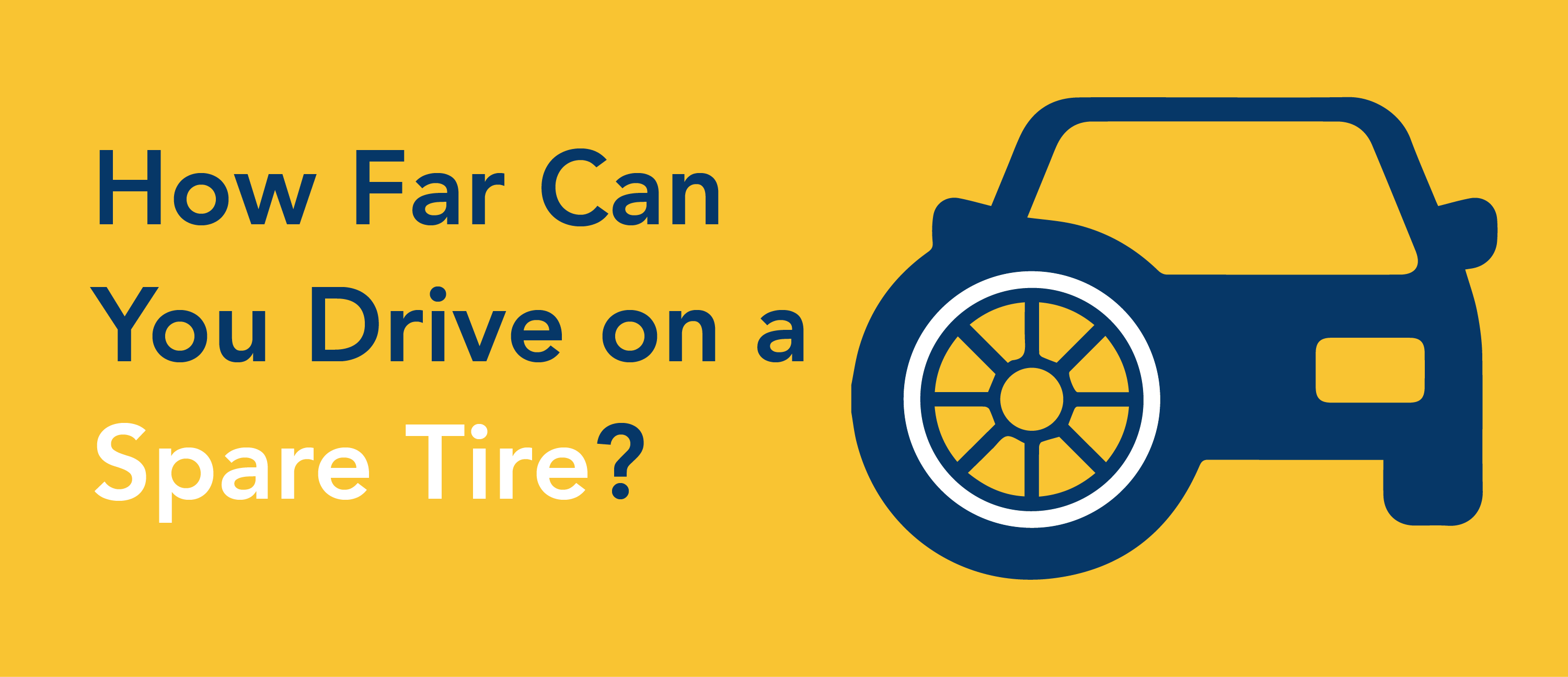Safe Driving on Spare Tires: How Far and Fast Can You Drive on a Spare Tire?
If you have a flat tire, you know how frustrating a process it is to get your car back to its normal operation. Not only does it disrupt your travel, it also takes time and money to replace a flat. Replacing a flat tire with your spare tire is a safe and effective way to get back on the road, but it’s important to remember that spare tires are designed for temporary use only. In this article, we’ll discuss the dos and don’ts of driving on a flat tire, tell you just how far you can drive on a spare tire, and provide best practices for safe driving on a spare tire.
Can You Drive on a Flat Tire?
No. You should not drive on a flat tire. Doing so can be extremely dangerous for several reasons.
A flat tire significantly impacts your vehicle’s handling and control, making it difficult to maneuver and increasing the risk of losing control, especially at higher speeds. The compromised handling significantly increases the risk of an accident, putting you, your passengers, and other drivers at risk. In addition, driving on a flat tire can cause severe damage to your wheel rim, suspension, and other vehicle components, leading to costly repairs beyond the flat tire itself.
If you suspect a flat tire, pull over to a safe location as soon as possible. Turn on your hazard lights to warn other drivers of your situation and replace the flat tire with your spare tire, also known as a donut.
Need help changing a flat tire? Our blog post, How to Replace a Tire Safely, has a detailed guide that walks you through the process step by step.
The only exception to this rule is run-flat tires. These tires are specially designed tires that allow you to drive for a short distance (typically 50 miles at a maximum speed of 50 mph) even after a puncture. This feature is intended to get you to a safe location or a nearby repair shop, not for regular use.
How Long Can You Drive on a Spare Tire?
You should drive no more than 50 miles on a temporary or donut spare tire if possible. If you absolutely must go longer than 50 miles, avoid driving on it longer than 70 miles. A spare tire isn’t meant to completely replace a tire, rather, its purpose is to tide you over until you can properly replace it.
How Fast Can You Drive on a Spare Tire?
Additionally, you shouldn’t drive faster than 50 mph on a temporary or donut spare tire, as they have far less traction and durability than a standard tire. You probably wouldn’t want to drive longer or faster on a spare anyway, as the typical spare can make your vehicle feel more like an airplane ambling down a runway than a car driving down a highway.
While using a spare tire allows you to get back on the road, it’s crucial to remember that they are temporary solutions. Regardless of whether your vehicle comes equipped with a compact spare or a full-size one, both have limitations and should be replaced with a proper tire as soon as possible to ensure optimal safety and performance.
How to Drive Safely on a Spare Tire
Regardless of whether your spare is a donut or a full-size spare, you’ll want to be careful while driving on it. To drive safely on your spare tire, follow these best practices:
- Check your spare tire’s pressure regularly when it isn’t in use. Spare tires often have different inflation pressure needs than your regular tires, so it’s wise to check them for proper inflation. Plus, a spare tire isn’t much help if it has low pressure.
- Give yourself extra space and time to brake. Using a spare tire can cause your vehicle’s anti-lock brake system (ABS) light to turn on, or for your ABS to not function properly. Additionally, a donut spare can lead to inaccuracies in some vehicles’ speedometers. Braking early and with extra space between you and other vehicles can ensure you’re not in for surprises.
- Be extra careful when driving in inclement weather. Spare tires don’t have advanced treads, so they aren’t able to provide the traction your regular tires would. Spares are therefore more susceptible to slipping or hydroplaning (sliding across the surface of puddles).
- Replace your spare when necessary. Replacement will depend on the type of spare you have; check your vehicle’s owner manual, or inspect the spare for more information on how frequently you should replace it. Many spare tires have a lifetime of about eight years.
Stay Safe and Be Prepared with Top Driver
As the Midwest’s premier driving school, Top Driver takes pride in preparing our students for everything they encounter on the road and with their vehicle including how to handle flat tires and safe driving on spares.
With more than 40 locations throughout Illinois, Michigan, and Ohio, Top Driver is your best resource for driver education. Each year we provide countless hours of in-vehicle training and classes, not to mention our free blog covering best practices for road safety. If you’re looking for teen programs for new drivers, adult, or remedial courses, Top Driver has you covered.
We’re also going the extra mile to ensure a safe learning space for our students and instructors by providing remote classroom education opportunities and implementing a coronavirus vehicle sanitization process.
Call 1 (800) 374-8373 or enroll online today!
